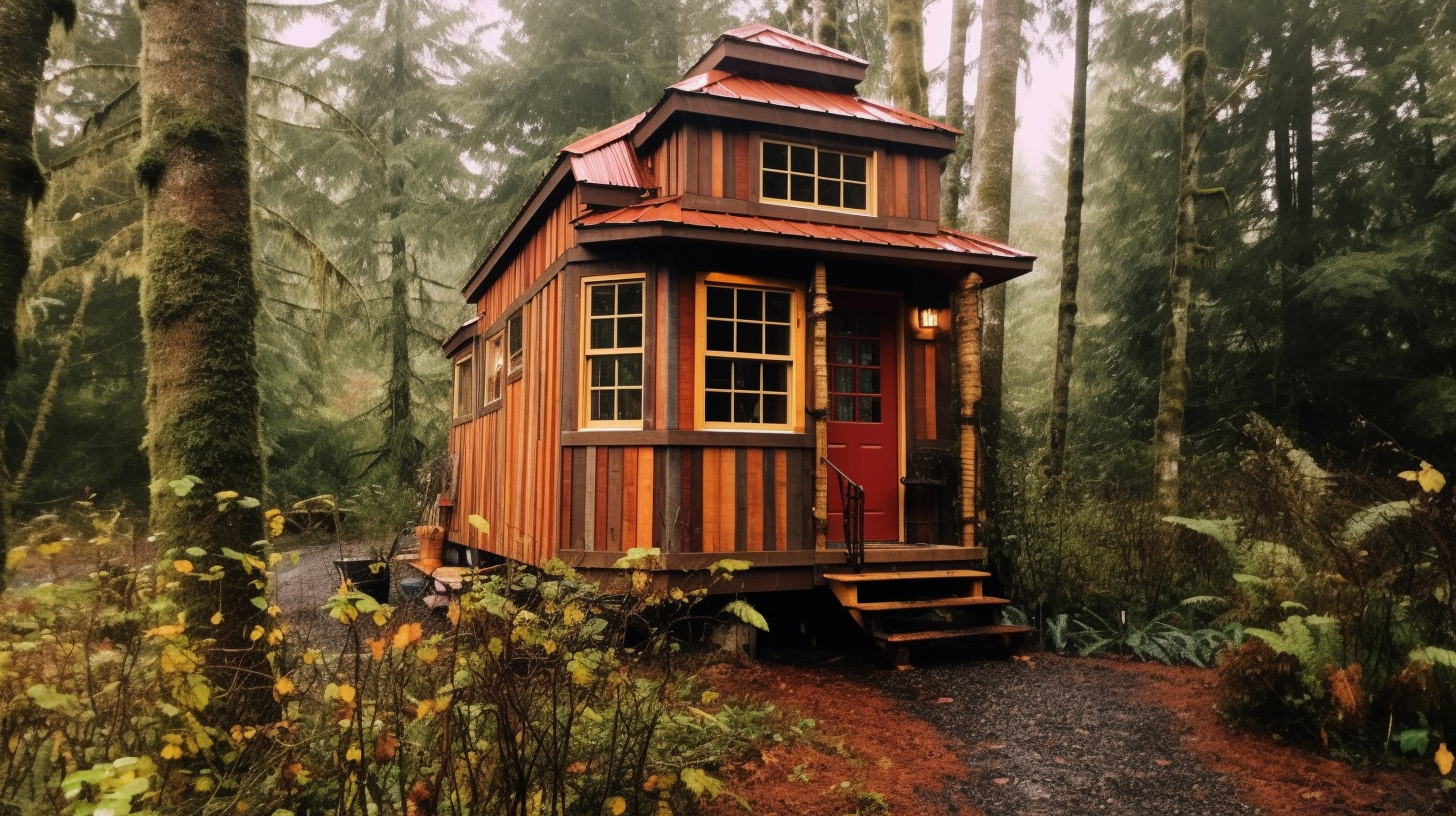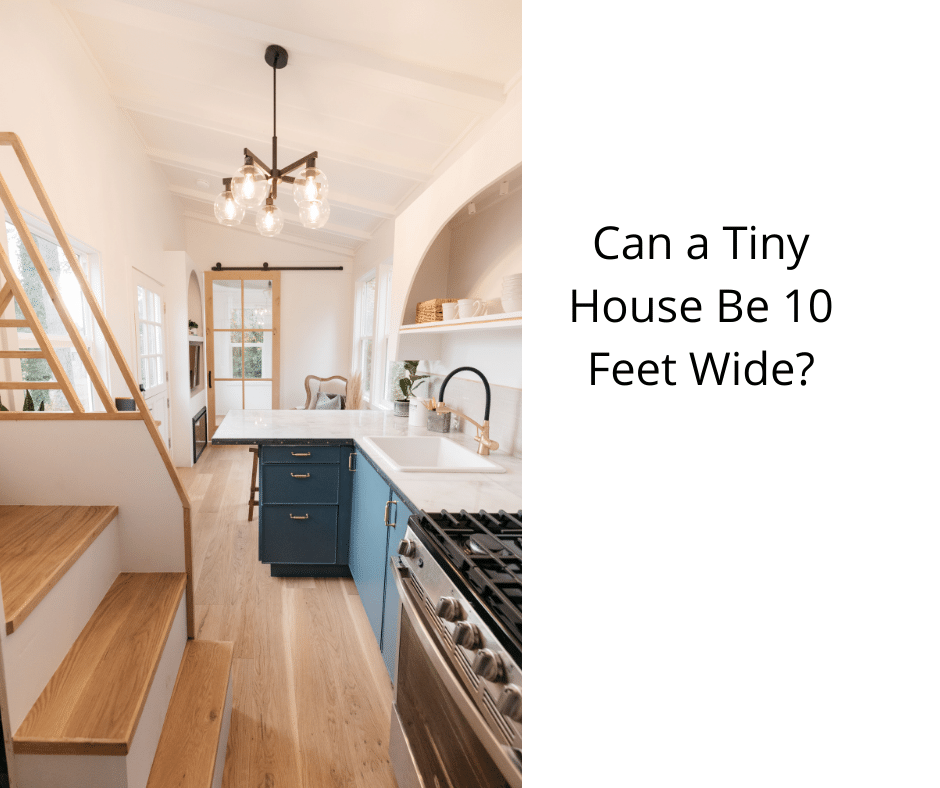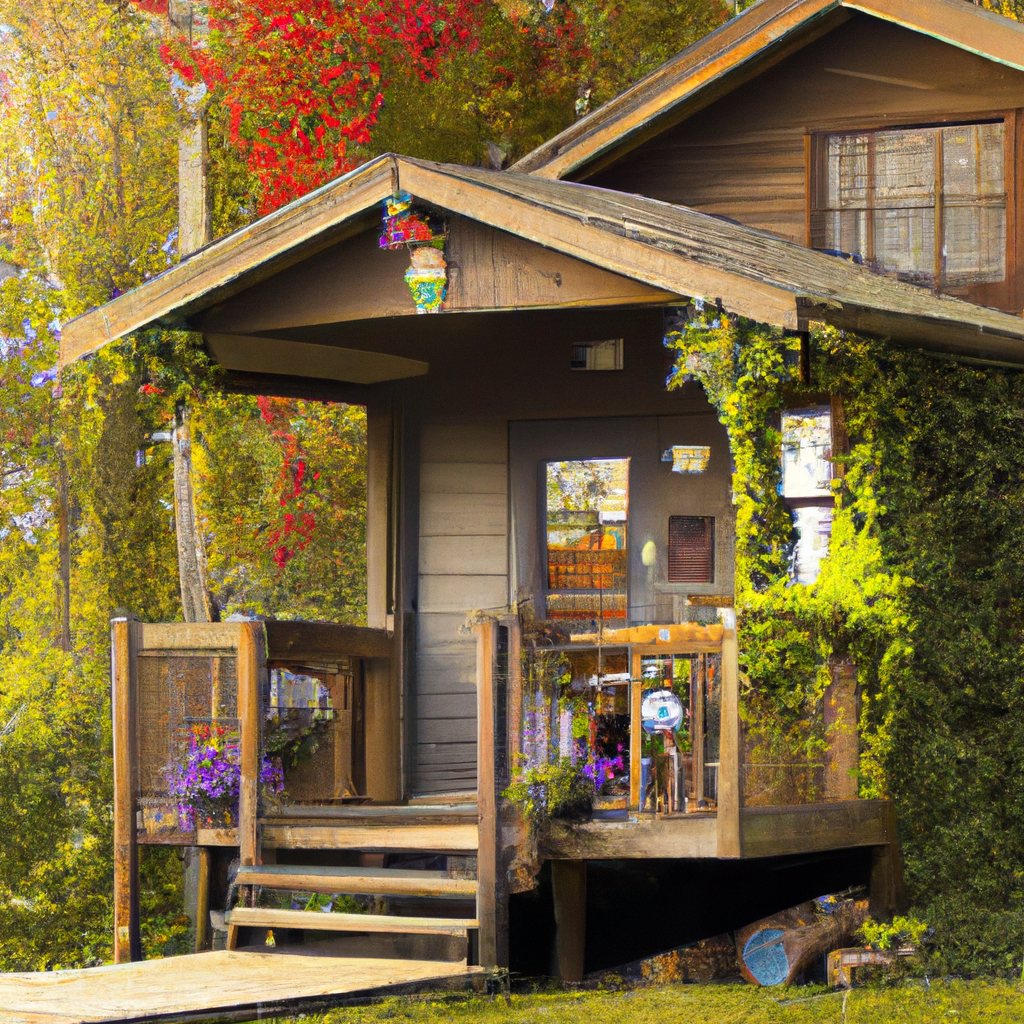Recreating In Tiny Homes: Tips For A Perfect Family Room
Small living spaces, such as tiny homes, are becoming more popular among people who want a minimalist and environmentally friendly lifestyle. While these cozy homes have many advantages, creating a family entertainment area in a limited space can be challenging. To design a space that is both functional and enjoyable, it requires careful planning, attention to detail, and a focus on meeting the family’s needs.
In this article, we will explore key tips for designing the perfect family room in a tiny home, from choosing suitable activities to maximizing space and energy sources.
Designing a family room in a tiny home requires a unique approach that prioritizes functionality and practicality. The limited space available means that every inch must be utilized to meet the needs of the family. At the same time, the room should be designed to provide a comfortable and enjoyable space for family members to relax and spend time together.
This article will provide tips on how to achieve this balance, including choosing suitable activities, energy sources, and mapping out every detail to maximize space and meet family needs. With these tips, families can create a perfect family room in their tiny home that provides numerous benefits, from downtime to family gatherings and activities.
Key Takeaways
- Prioritize functionality and practicality when designing a family room in a tiny home, maximizing available space and accommodating diverse needs and desires of occupants.
- Use multi-functional furniture pieces that can serve more than one purpose and incorporate storage solutions to save floor space and create a clutter-free environment.
- Assess energy needs of each appliance and device and select sustainable energy sources such as solar or wind power, while also considering ongoing expenses and maintenance costs.
- Tailor the family room to the occupants’ needs and preferences by creating a list of activities and corresponding furniture/equipment, such as gaming, reading, working out, arts and crafts, listening to music, watching movies/TV shows, and using computers/laptops/tablets.
Designing for Functionality
Creating a functional recreational family room in a tiny house necessitates a meticulous design approach that accounts for every detail to ensure space optimization and accommodate diverse family needs and preferences.
One of the most important considerations is the selection of multi-functional furniture pieces that can serve more than one purpose. For example, a sofa bed can serve as a seating area during the day and a sleeping area at night. Similarly, a coffee table with storage compartments can serve as a place to store books, toys, and games, while also providing a surface for snacks and drinks.
Storage solutions are also crucial in a tiny house recreational room. Using vertical space with shelves and wall-mounted organizers can help to maximize floor space while keeping items organized and easily accessible. Additionally, choosing furniture with built-in storage, such as storage ottomans or benches, can provide extra space for items that need to be stored out of sight.
By incorporating multi-functional furniture and storage solutions into the design, a tiny house recreational room can be both functional and comfortable for the entire family.
Choosing Energy Sources
Selecting appropriate energy sources is a crucial consideration when designing a functional recreational space for various activities in a limited space.
Renewable options such as solar technology and wind turbines are ideal for tiny homes, as they provide an eco-friendly and cost-effective solution. These options require a one-time investment and offer long-term benefits by reducing energy bills and promoting a sustainable lifestyle.
Regular electricity hookups and generators are also viable options for those who prioritize convenience and reliability. However, budget considerations must be taken into account, as these options may require ongoing expenses and maintenance costs.
When choosing an energy source, it is essential to consider the power demands of recreational activities. A family room that includes activities such as gaming, watching movies, and using computers and tablets will require a consistent energy supply. It is crucial to assess the energy needs of each appliance and device and select an energy source that can sustain the power requirements.
Mapping out the energy usage and needs of the recreational space will help determine the most suitable option that meets both the family’s needs and budget considerations. Ultimately, choosing the right energy source for a tiny home recreational space is crucial in creating a functional and enjoyable environment for the entire family.
Maximizing Space and Needs
Maximizing the available space and accommodating the diverse needs and desires of the occupants are crucial aspects to consider when designing a functional and multipurpose area for leisure activities in a tiny home. To achieve this, it is essential to plan out every detail of the room, including storage solutions and furniture that serves multiple purposes. Installing shelves and cabinets that can be mounted on walls or hung from the ceiling can help save floor space. Additionally, opting for furniture pieces that can transform into different configurations, such as a foldable table or a sofa bed, can also maximize the available space.
To further optimize the functionality of the recreational family room in a tiny home, it is crucial to assess the occupants’ needs and desires. A useful tool to accomplish this is to create a table that lists the activities that the family enjoys and the corresponding equipment or furniture required. For instance, if the family enjoys board games, incorporating a table that can be used for gaming and dining can be an excellent solution. On the other hand, if reading is a shared hobby, installing bookshelves or a reading nook can provide a cozy and comfortable space. By creating a list of activities and corresponding furniture or equipment, it is possible to design a recreational family room that is both functional and tailored to the occupants’ needs and preferences.
| Activities | Required Equipment | Suitable Furniture |
|---|---|---|
| Gaming | Board games, video game console, controllers | Gaming table, foldable chairs |
| Reading | Books, reading lamp | Bookshelves, reading nook |
| Working out | Exercise equipment | Foldable yoga mat, resistance bands |
| Arts and Crafts | Art supplies, craft materials | Foldable table, storage containers |
| Listening to music | Speakers, headphones | Comfortable seating, sound system |
| Watching movies and TV shows | TV, streaming device | Sofa bed, projector screen |
| Using computers, laptops, and tablets | Devices, chargers | Wall-mounted desk, foldable chair |
Frequently Asked Questions
How can you incorporate outdoor recreation into your tiny home design?
To incorporate outdoor recreation into your tiny home design, consider utilizing space saving solutions that allow for outdoor activities.
One option is to create a rooftop deck or balcony that can be used for activities like yoga, gardening, or stargazing.
Another option is to incorporate foldable or collapsible furniture that can be easily stored when not in use, freeing up space for outdoor equipment like bicycles or kayaks.
Additionally, utilizing outdoor storage solutions like sheds or storage containers can help keep equipment organized and out of the way.
It is important to consider the climate and weather conditions of your location when designing outdoor spaces, and to choose materials that are durable and able to withstand the elements.
By incorporating creative and practical solutions, you can enjoy the benefits of outdoor recreation while living in a tiny home.
What are some creative ways to store recreational equipment in a small space?
When it comes to storing recreational equipment in a small space, space saving solutions and DIY storage options are essential. It’s like a game of Tetris, fitting each piece together in the most efficient way possible.
One idea is to utilize vertical space by installing shelves or hooks on walls to store bikes, kayaks, or other bulky items.
Another option is to repurpose furniture, such as using a coffee table with hidden storage compartments for board games or using a storage ottoman for workout equipment.
With a little creativity and ingenuity, it’s possible to store all necessary recreational items in a tiny home without sacrificing precious living space.
Is it possible to have a multi-purpose room that serves as a recreational space and a guest room?
Maximizing space in a tiny home is a primary concern for homeowners, especially when it comes to creating a multi-purpose room that serves as a recreational space and a guest room.
To achieve this, furniture solutions such as a convertible sofa bed or a Murphy bed can be used to save space while still providing a comfortable sleeping area for guests.
Other furniture options, like a coffee table that doubles as a storage unit or an ottoman with hidden compartments, can also be utilized to maximize space and provide additional storage.
It’s important to carefully plan the layout of the room and choose furniture pieces that can serve multiple purposes to ensure that the space remains functional and practical for both recreational activities and accommodating guests.
What are some tips for minimizing noise and distractions in a tiny home recreational room?
When it comes to designing a recreational room in a tiny home, minimizing noise and distractions is crucial for creating an enjoyable and functional space.
Soundproofing solutions, such as acoustic panels, carpets, and curtains can be used to reduce external noises and echoes within the room.
Additionally, arranging furniture strategically can also help to absorb sound and create a more comfortable atmosphere.
For example, placing bookshelves or plants against walls can help to break up sound waves and reduce noise levels.
By implementing soundproofing techniques and carefully considering furniture placement, families can create a recreational room that is both practical and enjoyable in their tiny home.
How can you incorporate natural light into your recreational room design?
Natural light is essential when designing a recreational family room in a tiny home. Incorporating large windows or skylights can provide ample amounts of natural light to brighten up the small space. This not only saves on energy costs but also creates a more inviting and comfortable atmosphere.
To enhance the decor of the room, consider using light-colored furniture and accessories, as well as reflective surfaces such as mirrors or glass. These elements will help bounce light around the room and make it feel more spacious.
Additionally, adding plants or other natural elements can further enhance the natural light and create a calming environment. Overall, incorporating natural light and decor ideas into a tiny home recreational room can make it feel more open and inviting while also providing the benefits of natural light for the family’s well-being.
Hi, I’m Emma. I’m the Editor in Chief of Tiny House 43, a blog all about tiny houses. While tree houses are often associated with childhood, they can be the perfect adult retreat. They offer a cozy space to relax and unwind, surrounded by nature. And since they’re typically built on stilts or raised platforms, they offer stunning views that traditional homes simply can’t match. If you’re looking for a unique and romantic getaway, a tree house tiny house might just be the perfect option.










